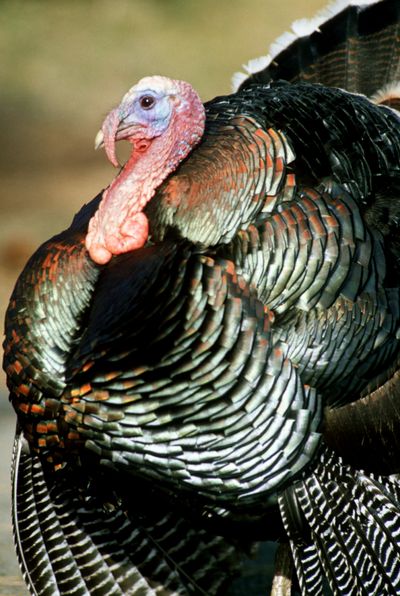Average Joe offers tips on bagging gobbler

Even though wild turkeys parade down some Spokane streets and poop on the decks of suburban homes, a spring gobbler is a wily and thrilling challenge to hunt.
I don’t tell many people I’m going turkey hunting. It’s not worth the smirks. I just do it, and enjoy learning something new every season.
I’m not a pro, but I’m less biased because I don’t have anything to sell. Here’s what works for me to fill my two Eastern Washington tags each spring.
Scout ahead: I look for turkeys and line up several public and private land options before the season. Turkeys can change their locations to some degree from year to year and even week to week when the pressure’s on.
No hurry: The opening of the youth hunt is a prime time to get a kid out before there’s competition in the field and turkeys become educated. Don’t miss that chance.
But don’t worry if you can’t make the general-season opener. Most of my turkey tags are notched in May, when fewer hunters are in the field, most of the hens have been bred and more gobblers are looking for love.
Sleeping in: The downside to hunting later in the season is that you have to get up earlier to be in the field at sunrise. However, as much as hunters tout “putting turkeys to bed” so they know where to be set up before daylight, I’ve found them difficult to call when they first fly out of the roost.
Maybe 80 percent of my gobblers have been taken around 10 a.m. after I’ve been able to set up appropriately to a gobbler’s pattern. They seem to be more receptive to calling at that time.
Sounding off: I admire hunters who have mastered one or more calls. Doubtless they have tricks that bring in reluctant gobblers when my calling might turn them away.
However, some hunters are so good they like listening to themselves more than they listen to the actual sounds turkeys are making in the field.
Turkeys don’t all sound alike. Some hens make sounds that imitate a hunter with pathetic calling technique. That’s me! And many gobblers have thought I was the real thing.
Spare the call: Too much calling gives a gobbler a chance to pinpoint your location too precisely – or it simply turns him off before he even gets that far.
In many cases, long periods of silence broken only by an occasional soft cluck or two can whip a reluctant tom into a trot in your direction.
Rest assured: Take care to be comfortable when you set up. I prefer to sit on my pack with my back against a tree, sometimes with a rest for the shotgun. More often, I sit with my knees at the right height to steady my elbows for holding the shotgun at my shoulder for prolonged periods as a gobbler dillydallies into range.
Wild turkeys are ultra sensitive to movement. Any gun aiming adjustments must be made VERY slowly or when the gobbler’s head is down or behind a tree. If the gobbler is strutting and you need to reposition, wait until it briefly turns away and its head is hidden by tail feathers.
Decoys: They work. Decoys are especially effective in giving the wary gobbler something to look at other than the hunter. However, occasionally they hold a reluctant gobbler just out of range.
Play it safe: Turkey hunters all wear camouflage and sneak around sounding like the prey each of them is trying to shoot.
I don’t use gobbler calls for that reason, and it makes me reluctant to use the realistic gobbler decoys. Hen decoys work, and are the safest option for hunting public lands.
Conversely, never make snap shots at turkeys as you work through the woods. Positive I.D. is mandatory, not only to assure it’s a BEARDED turkey, but also to make sure it’s a real turkey or that there’s not a camouflaged hunter in the background.
Show your colors: Don’t walk through the woods with a decoy or anything showing that’s red, white or blue.
I carry a hunter-orange cap and vest in my pack. When I kill a gobbler, I put on the fluorescent orange and keep it on until I’ve packed my bird back to my rig.